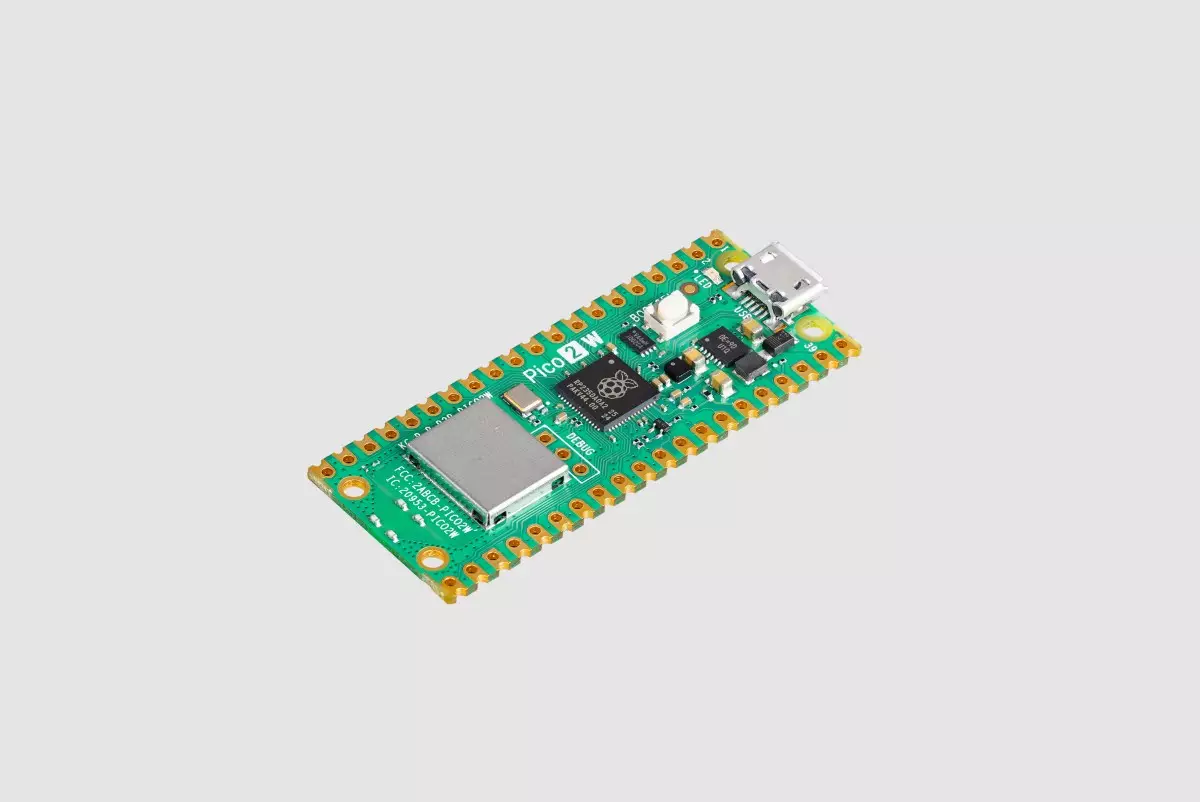The Raspberry Pi Foundation has long served as a beacon of innovation in the tech community, and its latest release, the Raspberry Pi Pico 2 W, is another milestone that reinforces its dedication to hardware development. This compact microcontroller board, built around the versatile RP2350, opens new avenues for hobbyists and professionals alike who wish to delve into the world of embedded systems.
Microcontrollers are specialized computing devices designed to control physical systems and processes, making them invaluable in the era of the Internet of Things (IoT). Unlike traditional Raspberry Pi boards, which function as general-purpose single-board computers capable of running complex operating systems, microcontrollers operate on a more basic level. They are engineered to directly interface with electronic components such as sensors, motors, and displays, providing a cost-effective and efficient solution for specific tasks. The Pico 2 W embodies these characteristics, offering a user-friendly platform for developing a myriad of hardware projects without the need for extensive technical expertise.
The Raspberry Pi Pico 2 W packs an impressive array of features in its small frame. What sets it apart from its predecessors is its dual-core, dual-architecture processor that operates at 150 MHz. Users can choose between Arm Cortex-M33 cores, known for their robust application in microcontroller projects, or open-hardware Hazard 3 RISC-V cores. This flexibility allows developers to select the architecture that best fits their needs, making the Pico 2 W an accommodating tool for a broad spectrum of applications.
Moreover, with 4 MB of onboard flash memory and 520 KB of SRAM, this microcontroller can efficiently execute numerous processes while retaining significant code storage capability. This balance of speed and memory proves essential for tasks that demand quick responsiveness and reliable performance.
In today’s fast-paced digital environment, connectivity is crucial. The Pico 2 W incorporates Wi-Fi (2.4GHz 802.11n) and Bluetooth 5.2 capabilities, broadening the horizons for developers aiming to create connected devices. Although some users may have anticipated support for 5GHz networks, the current wireless options provide ample opportunity for creating IoT applications that do not require extensive bandwidth. For those who might not need such connectivity features—perhaps due to budgetary constraints or application-specific requirements—Raspberry Pi also offers a Pico 2 model without wireless capabilities, priced at an enticing $5.
Raspberry Pi’s influence extends beyond individual hobbyists; its products are increasingly utilized in industrial settings. With the company recently transitioning to public ownership, it reported that a staggering 72% of its sales now stem from the industrial and embedded market segments. This shift underscores the growing reliance on Raspberry Pi products for automation, robotics, and other technological applications.
The Pico 2 W, available in individual units and bulk packaging, demonstrates the company’s commitment to making microcontroller technology accessible to both personal and commercial users. This broad availability encourages experimentation and encourages innovation, allowing engineers and developers to harness the power of microcontrollers for large-scale projects without prohibitive costs.
As we stand on the cusp of a technological revolution, the Raspberry Pi Pico 2 W symbolizes a transformative tool that empowers users to engage with the intricate world of hardware development. Its adaptable architecture, coupled with its robust connectivity features and reasonable pricing, positions it as a prime choice for anyone looking to turn imaginative concepts into tangible reality. As industries continue to evolve and the demand for smart and connected devices increases, the Pico 2 W is sure to play a pivotal role in shaping the landscape of microcontroller-based solutions. The Raspberry Pi Foundation has not just created a product; it has laid the groundwork for endless possibilities in the realm of innovation.

